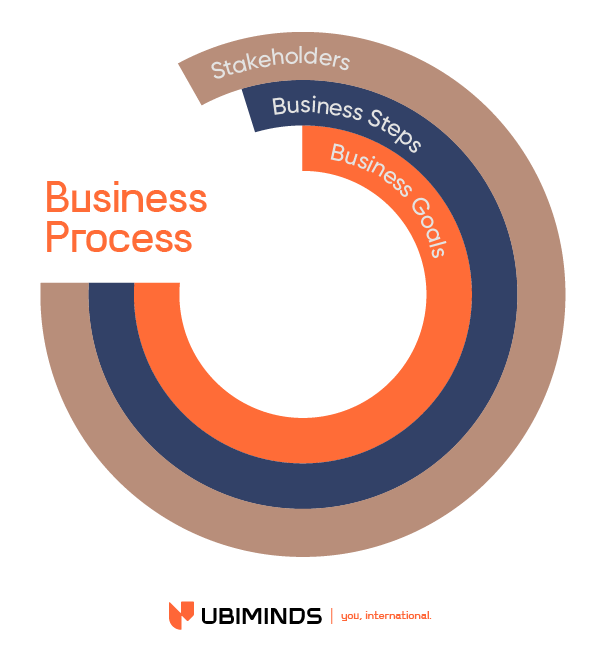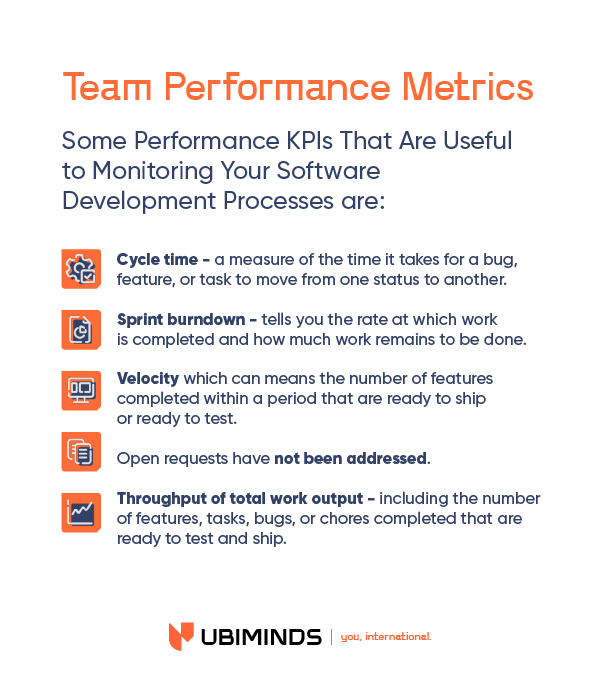Without process, Product Development is chaos. Backlog, delaying delivery, duplicating tasks, and losing operational performance are just a few examples of consequences when the company does not establish good processes.
That’s why the product development process works based on stages necessary to transform a concept or idea into reality. There are several stages until the launch of this concept is achieved. There is a product journey that must be followed.
This process has many steps and the path can be different for each organization. To launch a product it is important to discover an opportunity in the market, have an idea, design, build the product, test it and finally sell it to customers. Therefore, a step-by-step process is essential. This ensures that the team spends as little time as possible.
The essential attributes of an ideal business process
- Finite – A good business process has a well-defined starting point and ending point. It also has a finite number of steps.
- Repeatable – A good business process can be run an indefinite number of times.
- Creates value – It ultimately aims at translating the creation of value into executable tasks and does not have any step in the process just for the sake of it. In other words, if any step in the process isn’t adding value, it should not exist.
- Flexibility – It has an in-built nature to be flexible to change and is not rigid. When there is any scope for improvement that is identified, the process allows that change to be absorbed within itself without operationally affecting its stakeholders as much.
Source: Kissflow

How to make a good business process.
Why should I focus on getting the most out of my software development process?
One of the reasons is because Process Management exploits standardization and continuous improvement at the same time that gives the team more time to develop their creativity. So, while you increase speed and efficiency to your product development you reduce waste of time in bottlenecks yield and eliminate unnecessary variation in workloads, distractions, and delays.
One of the reasons is because Process Management exploits standardization and continuous improvement at the same time that gives the team more time to develop their creativity. So, while you increase speed and efficiency to your product development you reduce waste of time in bottlenecks yield and eliminate unnecessary variation in workloads, distractions, and delays.
Companies such as Raychem, Motorola, Harley-Davidson, Hewlett-Packard, General Electric, AT&T, Ford, General Motors, and NEC already successfully applied process management to their product development reducing their average development times by 30% to 50%.
List of Software Development Process Benefits:
- Reduce backlogs and the congestion that plagues organizations that undertake many projects at once
- Share staff and equipment across those projects
- Minimize the number of iterations, or rework cycles
- Identify and solve problems rapidly and early
- Focus a company’s development effort on strategic priorities
- Automate steps that had become bottlenecks
Planning and roadmap tracing: who are the players and how should they interact?
Interaction and flexibility are important keys for Product Development Processes. Best in class companies recognize the importance of iteration, the ability to go backward in an otherwise linear process—when the situation warrants.
For example, if a high-potential opportunity emerges during idea generation—but it doesn’t neatly fit into one of the growth platforms defined earlier in the process—they need to be flexible enough to adapt their process (on an exception basis) in order to capitalize on a potentially lucrative opportunity.
A good starting point at your planning and roadmap tracing is to adopt the Software Development Lifecycle (SDLC).
This is a successful method of Product Development Management because applies good practices in organizing and standardizing the approach for:
- Design
- Develop
- Test
- Deploy and maintenance
This methodology is also known as the Application Development lifecycle and allows to create, maintenance, and fix digital products, increasing cooperation between participants and improving resource management and cost-effectiveness.
And the best part is: each phase has its own process and results which make it easier to build a high-performance team and launch a reliable software product.
The Software Development Life Cycle – SDLC range of processes includes:
This is the requirements collection step, which means communicating with the customer before building software to get to know their requirements thoroughly.
Roles involved: Business Analyst or Product Analyst
Process
Writing a Customer Requirement Specification (CRS) document from the customer’s perspective and describes in a simple way, what the software is going to do.
Best Practices
- Elicit requirements specification from multiple sources, learning more about the users, their workflows and task sequencing, internal rules, types of problems they may encounter, or interactions with other users and staff members.
- Organize and prioritize requirements, document requirements attributes, and keep all information up to date in order to remain traceable during testing and verification.
- Make sure all stakeholders are in agreement and including project team members if you can.
In this stage, the team involved must create and cluster the scheme to allocate physical components of the product, draft a layout, and identify fundamental and incidental interactions involved.
Roles involved: Project Manager/Product Owner/Business Analyst, UX/UI Designer + Head of Product
Process
All the software requirements specifications should be registered in the Software requirements specification (SRS) document, describing software features and performance.
Best Practices
- Good architecture should be robust but still adaptable for change, maintainable, scalable, secure, available, and performant. It has no fixed structure since every decision made on the architecture front depends on the use case.
Build the entire system by writing code using the chosen programming language.
Roles involved: Software engineers and developers squads such as Frontend Engineer, Backend Engineer, Fullstack Engineer, and DevOps Engineer. Therefore it’s easier to manage this long phase of the Software Development Life Cycle process.
Process
Coding is the process of using a programming language to get a computer to behave how you want it to. Every line of code tells the computer to do something, and a document full of lines of code is called a script. Each script is designed to carry out a job. This job might be to take an image and change its size.
Best Practices
- Meet the project specification with a “correct output for each possible input”
- Produce the software on schedule (and within budget)
- Make the software adaptable to cope with changing requirements
- Make the software efficient enough for the environment in which it is used
- Having a clear definition of purpose, simplicity of use, ruggedness (difficult to misuse, kind to errors).
- Having an early availability (delivered on time when needed) and reliability.
- Extensibility in the light of experience
- Cherish brevity and efficiency (fast enough for the purpose to which it is put).
- Having a minimum cost to develop and be in conformity to any relevant standards.
- Keep clear, accurate, and precise user documents.
The goal of this step is to find out whether their code and programming work according to customer requirements. Quality Engineer, Security Engineer, and the leaders are involved in this phase to testing scripts and interfaces according to quality assurance testing (QA) system integration testing (SIT), and user acceptance testing (UAT).
Roles involved: CTO, Head of Engineering, Product Manager, Product Owner, Head of Product, Quality Engineer, Security Engineer
Process
Software Testing is the process of executing a program or application with the intent of identifying bugs. So the process involves validating a piece of software that meets its business and technical requirements. Testing is the primary avenue to check that the built product meets requirements adequately. Some of the testing methods are Agile, Waterfall, Scrum, or RUP.
Best Practices
- Rely Only on a Controlled Security Environment for Testing
- Carry Tests Throughout the Software Development Cycle
- Break Tests in Small Fractions
- Write Tests for Maximum Coverage
- Carry Regression Tests
- Note and Report All Tests
- Clean the Test Code Prior to Final Release of Software Product
- Isolate the Application from Developers
- Customize Testing according to needs and their possible use cases
- Accumulated Skilled Testers such as UFT, HP ALM, Selenium, and other open-source tools for advanced testing
- Build a Target Operating Model for Testing
This is the last phase of the software development life cycle (SDLC). Now it’s time to go live, which means that the product is ready to be used in a real environment by all end-users of the product.
Roles involved: CTO, Head of Engineering, Product Manager, Product Owner, Head of Product, Technical Support, Database Analyst, Data Scientist
Process
The deployment process flow consists of 5 steps: Planning, development, testing, deploying, and monitoring.
Best Practices
- Use a deployment checklist (this reminds you to complete critical tasks both before and after deployment)
- Choose the right deployment tools (Generally, you want tools that work natively with your application infrastructure and integrate with your other tools.)
- Use a continuous integration server (CI servers pull in the source code from all developers and test it together in real-time)
- Adopt continuous delivery to have applications that are always ready to deploy
- Automate your deployment using scripts to reduce errors and speed up the process
Want more details? Check out our article on Team Roles.
Process view monitoring and decision-making
For some organizations, monitoring is solely in the hands of operations, but recently the shift has been toward cross-discipline engineers who build, test, monitor, and are on call for their applications. In some cases, there are engineers who do nothing but monitor applications and filter down issues to the developers of an offending application. These cross-discipline engineers are sometimes called DevOps engineers or site reliability engineers (SREs).
Some Performance KPIs that are useful to monitoring your Software Development Processes are:

- Cycle time – a measure of the time it takes for a bug, feature, or task to move from one status to another.
- Sprint burndown – tells you the rate at which work is completed and how much work remains to be done.
- Velocity can mean the number of features completed within a period that is ready to ship or ready to test
- Open requests have not been addressed.
- Throughput of total work output – including the number of features, tasks, bugs, or chores completed that are ready to test and ship.
Empowering your team to enhance capabilities
Last but not least is empowering your team to enhance capabilities. How to do that? It’s simple: attributing the right roles to them and giving the best conditions, tools and fostering communication in the team to make things happen.
In the Project Oxygen study, the team found that high-scoring managers empower their teams and avoid micromanaging. instead, the best-in-class innovators:
- Ensure they have a deep, profound knowledge of their customers’ needs, including their unmet and unarticulated needs.
- Front-load their product development by reducing their concept technical risk, concept marketing risk, and creating a draft of a detailed financial plan
- Ensure the product in development actually solves the identified problem in the manner the consumer prefers.
- Assign specific members from across the business to their product innovation teams.
- Successfully complete outlined activities in each stage prior to obtaining management approval to proceed to the next stage of product development.
- Mentor team members, focusing on coaching them to success and helping them achieve not only the team or company goals but their personal career goals as well.
- Encourage open communication, making sure that you clearly communicate your goals, projects, and ideas, and encourage your team members to do the same.
- Demonstrate that you trust your team members and giving them the amount of authority they need to complete the project without checking back with you on every detail.
Managing your development processes based on the best practices is a particularly effective way to improve productivity and efficiency in your product. A process forms the lifeline for any business and helps it streamline individual activities, making sure that resources are put to optimal use. So, if you want to build a high-performance software development team, you need strong management and hire the best engineers.
Ubiminds custom-curates nearshore talent for high-performance product teams. So you can count on smart IT staff augmentation strategies to filter out 99.5% of candidates and with a unique HRO business model that doesn’t charge companies for recruitment services.
If you are looking to grow your software engineering and product teams, reach out. We can help you with your staffing needs, fast.
Looking to bring in talent that will implement Product Development Management best practices? Let’s talk!

International Marketing Leader, specialized in tech. Proud to have built marketing and business generation structures for some of the fastest-growing SaaS companies on both sides of the Atlantic (UK, DACH, Iberia, LatAm, and NorthAm). Big fan of motherhood, world music, marketing, and backpacking. A little bit nerdy too!


